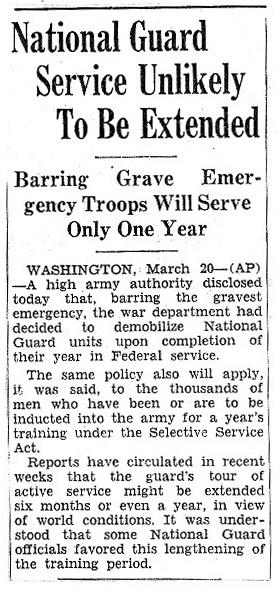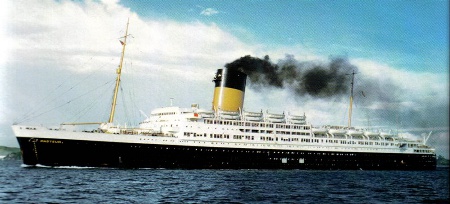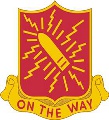

World War II
203rd Field Artillery Battalion, European Theater
203rd Field Artillery Battalion, European Theater
(c) 152nd Field Artillery Association, 2011
152nd Field Artillery Association
The numerical designation of an Amercian Army unit means little. It is the spirit of the officers
and men in an organization which makes a reputation. Upon its esprit de corps, the 203rd
Field Artillery Battalion built its splendid record in World War II.
The 203rd was formerly the 1st Battalion of the 152nd Field Artillery and was activated in
1922. On February 24th, 1941, as war became imminent, the 152nd Field Artillery was
inducted into Federal service as part of the 43rd Infantry Division. The unit's first training station
was Camp Blanding, Florida. Upon the triangularization of the 43rd Division, shortly after the
attack on Pearl Harbor, the 1st Battalion of the 152nd Field Artillery became the 1st Battalion
of the 203rd Field Artillery. At that time, the Battalion joined its new regiment at Camp Shelby,
Mississippi. Another transfer of station sent the Battalion to Fort Bragg, where the regiment
was assigned to the 15th Field Artillery Brigade. With the brigade, the outfit fired for the Field
Artillery School at Fort Sill during the latter part of 1942. The War Department's dissolution of
the regimental structure for field artillery resulted in the unit's new designation: the 203rd Field
Artillery Battalion. The reorganization was effected on March 1st, 1943.
The remainder of 1943 witnessed three other phases of training for the 203rd: a second tour
of duty at Fort Bragg, Second Army manuevers in Tennessee, and field problems in the
desert of California. From its base at Camp Iron Mountain, California, the outfit moved across
the continent to Camp Shanks, at the New York Port of Embarkation. Overseas service lay in
the immediate future. Lieutenant Colonel John G. Doran, commanding officer of the 203rd,
took his men aboard the British ship Pasteur on February 20th, 1944. Eleven days later, the
Battalion disembarked at Liverpool, England.
Sometimes the Truth changes....
Read a summary of the 203rd's experiences in Europe, from "Misery Hill" on the Salisbury
Plain to Omaha Beach to VE Day. The "Skill On The Way" booklet was published by the
1-152FA in 1993. It includes an extract of the 119th FA Group's yearbook, but most
importantly it also includes a great first-person narrative of the 203rd's experience,
including an entry for every position they occupied. The author is unknown.
Units Supported by the 203rd:
24 Jun 44 to 5 Jul 44 - XIX Corps Arty
5 July '44 to 17 July '44 - 30th Infantry Division
17 July '44 to 14 December ' 44 - 228th FA Group
14 Dec 44 to 9 Apr 45 - 119th FA Group
9 Apr 45 to 5 May 45 - 30th Infantry Division
5 May 45 to VE Day - 119th FA Group
24 Jun 44 to 5 Jul 44 - XIX Corps Arty
5 July '44 to 17 July '44 - 30th Infantry Division
17 July '44 to 14 December ' 44 - 228th FA Group
14 Dec 44 to 9 Apr 45 - 119th FA Group
9 Apr 45 to 5 May 45 - 30th Infantry Division
5 May 45 to VE Day - 119th FA Group
Follow B Battery from Omaha Beach to Magdeburg. Each position area from the "Skill on the Way" booklet posted on MSN Live
Maps. For best viewing, change to Aerial view and zoom in to each postion area. Really cool, if like that sort of thing.
View photographs taken by a B Battey soldier, Fritz Arndt, during the 203rd's dash across Europe. Photos provided by Fritz's son
Peter Arndt. Links to the Association's Picasa page.
Read about Lieutenant Edward D. Manning, of A Battery, who was killed in August of 1944. This link is to an excerpt of an
autobiography of Lt. Manning's brother, Fletcher. The excerpt includes the letters sent to Edward's widow from the unit chaplain
and from fellow officers who were present when he was wounded.
119th FA Group Narrative. 73 pages, with maps (11 MB) from the 119th's "yearbook" produced immediately after the war. The
203rd fought with the 119th from December 44 through the end of the war, and are included in this narrative.
The HMS Pasteur, built as a cruise ship but used heavily as a troop ship,
ferried the 203rd FA Battalion from NY to Liverpool on 20 Feb 44.
203rd FA portion of the 119th FA Group "yearbook." Includes 203rd FA unit rosters, photos, lists of casuaties and awards, and
more. 6MB .pdf file.
* New! * Operations Journal from when the 203rd left Camp Iron Mountain in February 1944 enroute to their Port of
Embarkation at Camp Shanks, through the end of the war in Europe. This version has been converted from the orignal
page-by-page photographs to black & white, in order to reduce the file size from 86MB down to about 5MB.
* New! * 203rd FA Battalion history covering the period from November 1943 through January 1945. Includes lists of men killed
and wounded, awards, and campaign information up to that point. 15MB.








